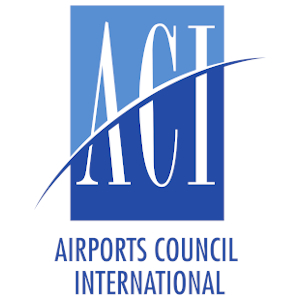Strong demand for air travel amidst heightened macroeconomic risks

Airports Council International (ACI) World has published its eleventh quarterly assessment analyzing the impact of the COVID-19 pandemic, its effects on airports, and the path to recovery.
Despite strong headwinds, the industry is continuing to recover as more countries ease travel restrictions and open their markets, including Japan in the Asia-Pacific region. This coupled with the propensity for air travel will drive the industry’s recovery, expected to reach 2019 levels in 2024.
Macroeconomic risks
As the world emerges from the worst health crisis of modern times, the global economy faces a new array of challenges. From the ongoing conflict in Ukraine to bottlenecks in global supply chains, there are risks that threaten to disrupt the pace of the post-pandemic recovery. The most obvious manifestation of such risks is the significant increase in prices for different sectors, particularly food and energy. This sudden rise in cost has in turn produced a tightening of global monetary policy, with central banks increasing interest rates to tame inflation. This will inevitably cause a decrease in economic activity and potentially impact consumer confidence.
Contributing to these inflationary pressures is a tight labour market across many jurisdictions. The shortage is especially felt in the air transport sector where stakeholders across the entire aviation ecosystem moved from a weakened state of demand due to travel restrictions earlier in the year to an immediate surge in demand with the lifting of restrictions. Matching available capacity and human capital with that strong surge in demand in such a short period of time remains a challenge. In essence, there are macroeconomic pendulums moving in opposite directions that are affecting air transport demand. Though higher input prices will inevitably impact the cost of travel, unemployment rates remain historically low with continued pent-up demand for air travel. Low levels of unemployment in the broader population and rising real incomes increases the propensity to travel. However, some analysts argue that this may be short lived as central banks continue to tame inflation with higher interest rates, thereby contracting economies—the heightened downside risk of a recession that is characterized by both a contraction in output and higher unemployment levels remains omnipresent on the horizon. If this risk materializes, it could represent an important headwind for air transport on its path to recovery in major aviation markets.
A strong yet uneven recovery in H1 2022 airport passenger traffic
 The recent momentum created by the lifting of many health measures and the relaxation of most travel restrictions in many European countries and in the Americas has renewed industry optimism. It however exposed even more the uneven recovery—a notable gap exists among markets, especially where COVID-19 vaccine availability and uptake are limited, geopolitical conflicts are visible, or strict travel restrictions are still enforced. This gap resulted in offsetting the impact of pent-up demand during the early Northern Hemisphere summer season on a global scale. For instance, major aviation markets in Asia-Pacific lagged behind their North American and European counterparts as they imposed restrictive measures for international passenger traffic especially through the lens of the first half of 2022—H1 2022 versus H1 2019. The Asia-Pacific markets of Japan at 39% of H1 2019 levels in the first half of 2022, Thailand (31%) and China (28%) were all well below pre-pandemic levels. On the other hand, markets like Colombia, Mexico and Nigeria welcomed a surge in demand and exceeded their 2019 levels. The United States (87% of 2019), Spain (82%), Brazil (80%), and India (75%) were among other major aviation markets also making strides to close the gap with 2019 passenger levels in the first half of 2022.
The recent momentum created by the lifting of many health measures and the relaxation of most travel restrictions in many European countries and in the Americas has renewed industry optimism. It however exposed even more the uneven recovery—a notable gap exists among markets, especially where COVID-19 vaccine availability and uptake are limited, geopolitical conflicts are visible, or strict travel restrictions are still enforced. This gap resulted in offsetting the impact of pent-up demand during the early Northern Hemisphere summer season on a global scale. For instance, major aviation markets in Asia-Pacific lagged behind their North American and European counterparts as they imposed restrictive measures for international passenger traffic especially through the lens of the first half of 2022—H1 2022 versus H1 2019. The Asia-Pacific markets of Japan at 39% of H1 2019 levels in the first half of 2022, Thailand (31%) and China (28%) were all well below pre-pandemic levels. On the other hand, markets like Colombia, Mexico and Nigeria welcomed a surge in demand and exceeded their 2019 levels. The United States (87% of 2019), Spain (82%), Brazil (80%), and India (75%) were among other major aviation markets also making strides to close the gap with 2019 passenger levels in the first half of 2022.
Despite the heterogenous recovery, air travel should see a continued uptick on the aggregate in the second half of 2022, moving the industry closer to its recovery. While many indicators are pointing towards the recovery, the industry is also facing some noteworthy headwinds.
Please click here to visit the ACI Website and view the full article
